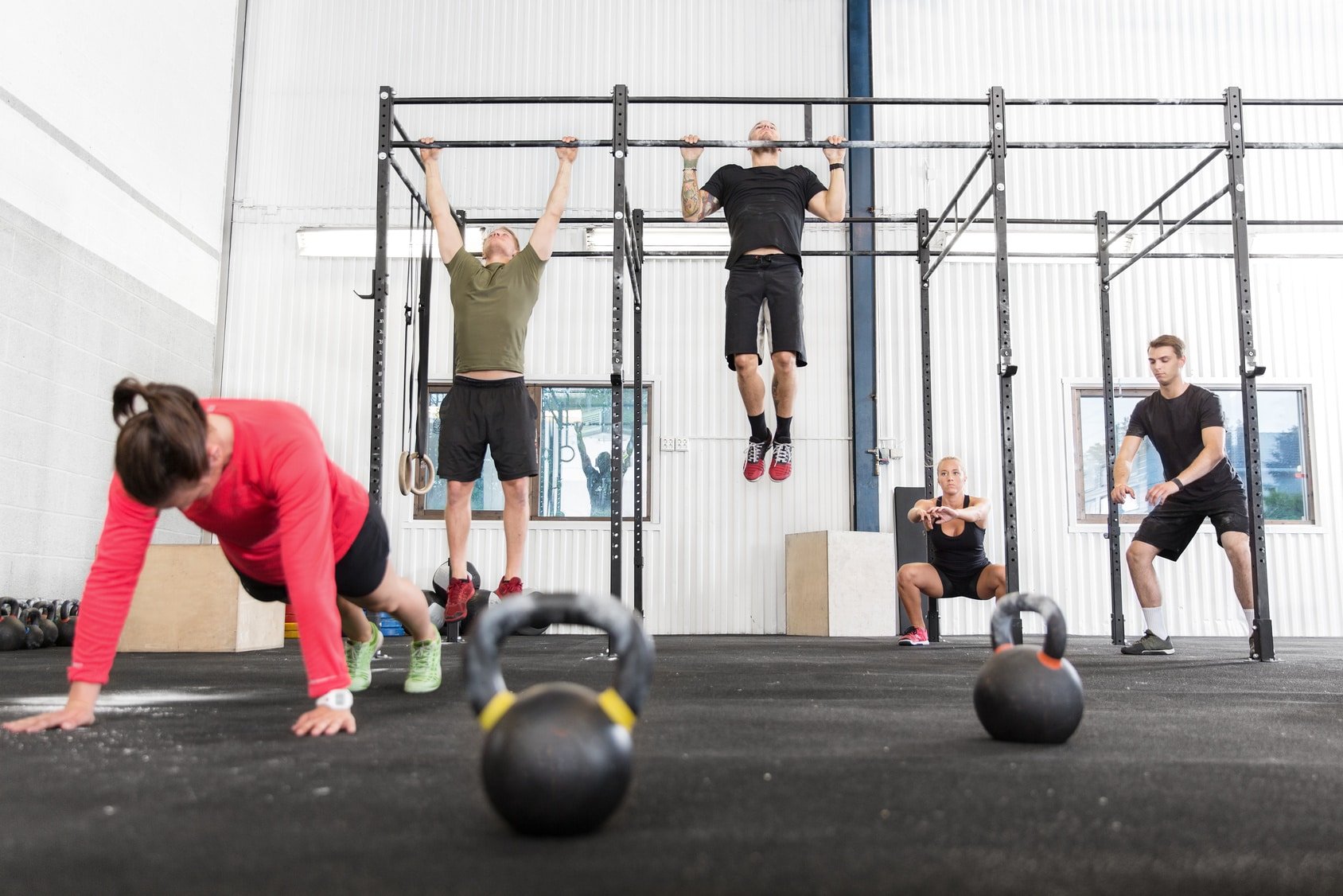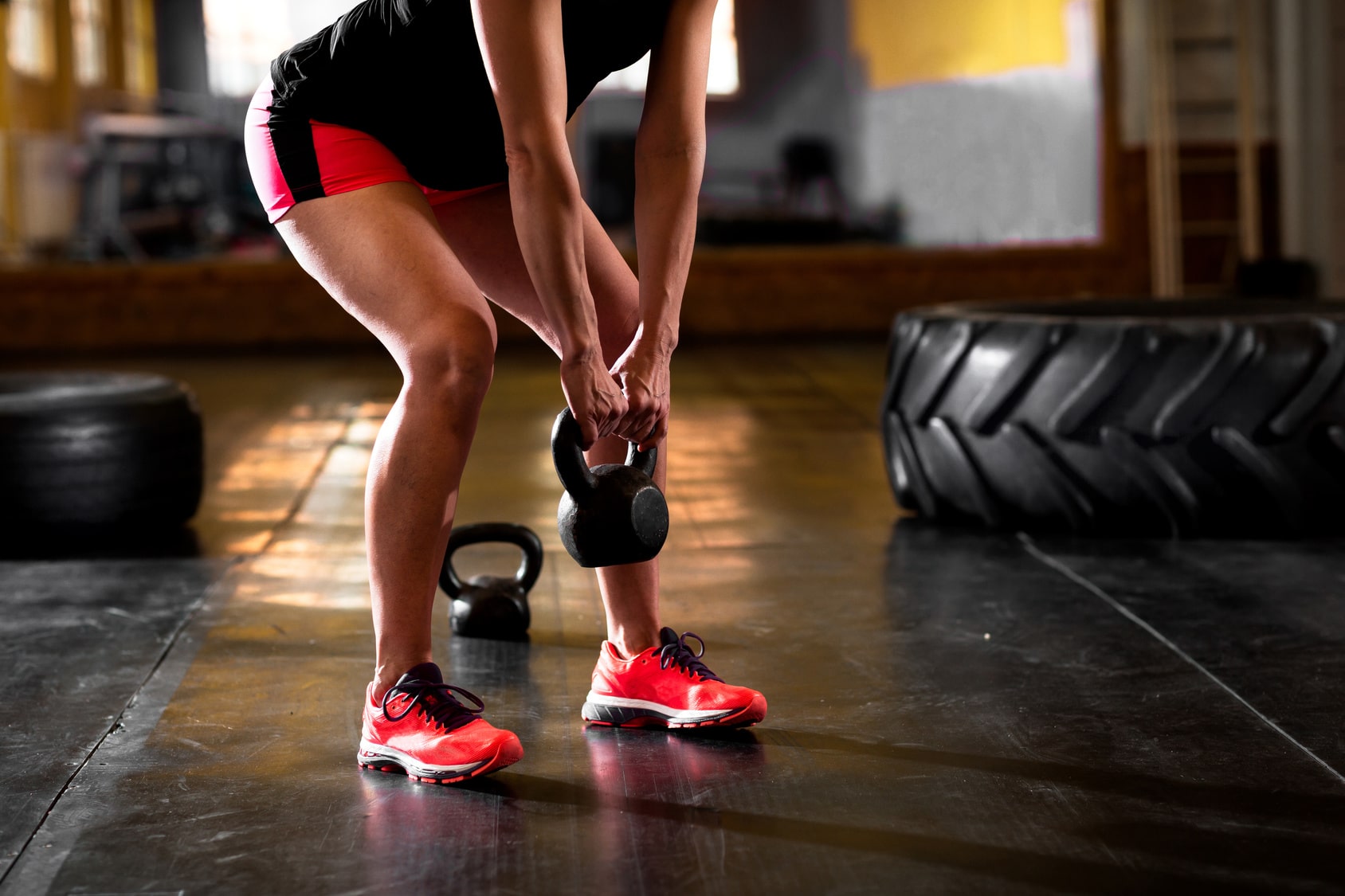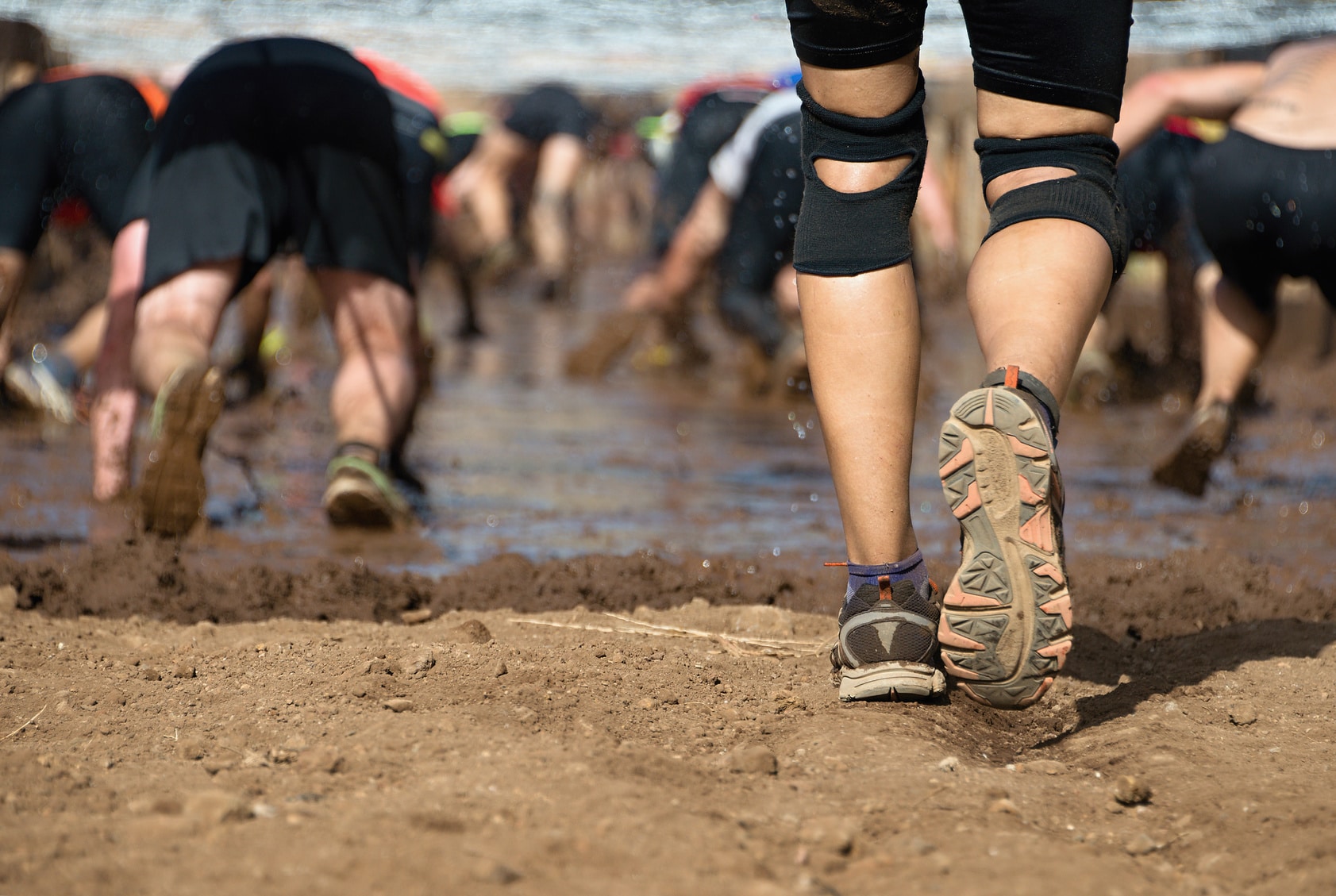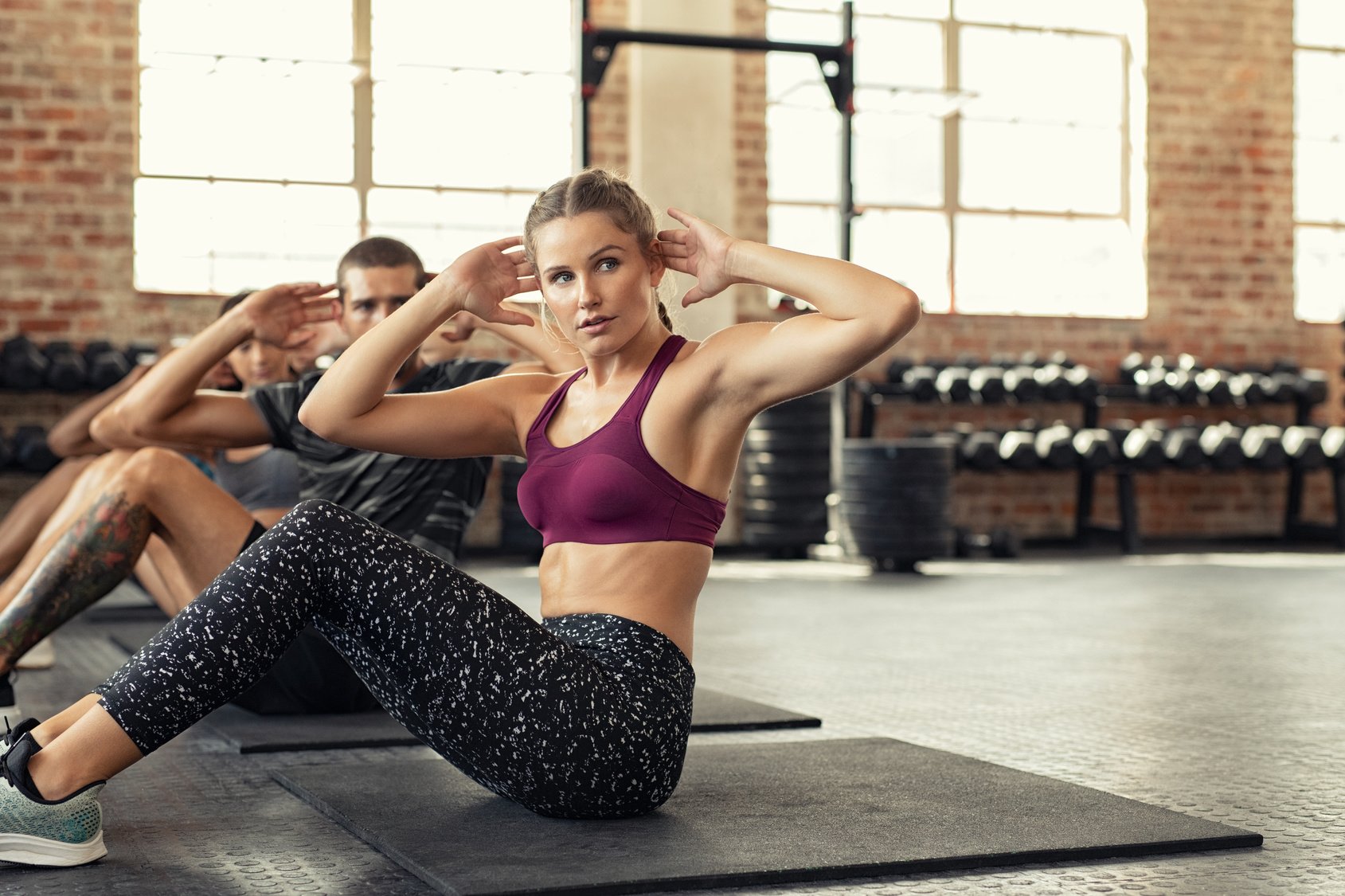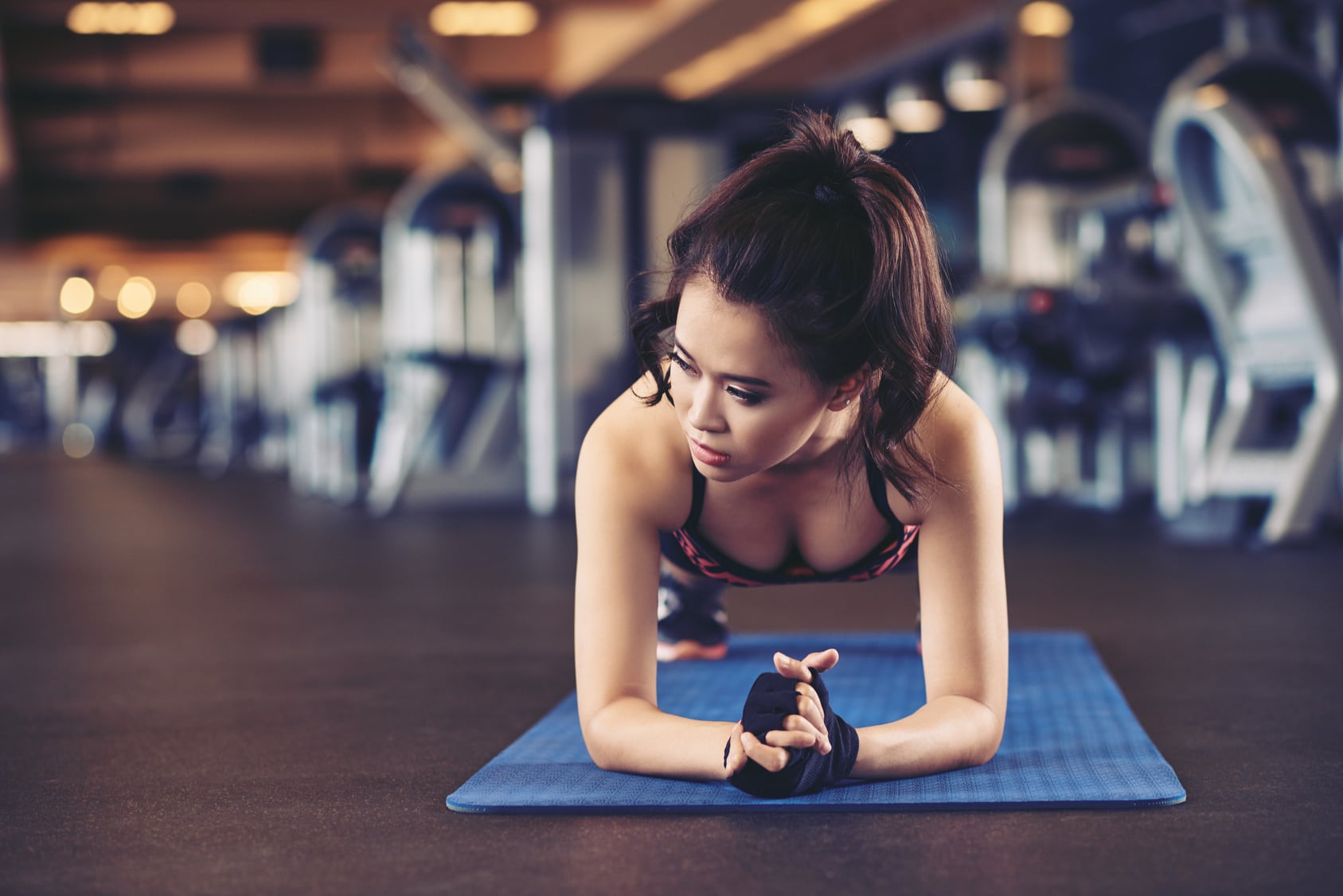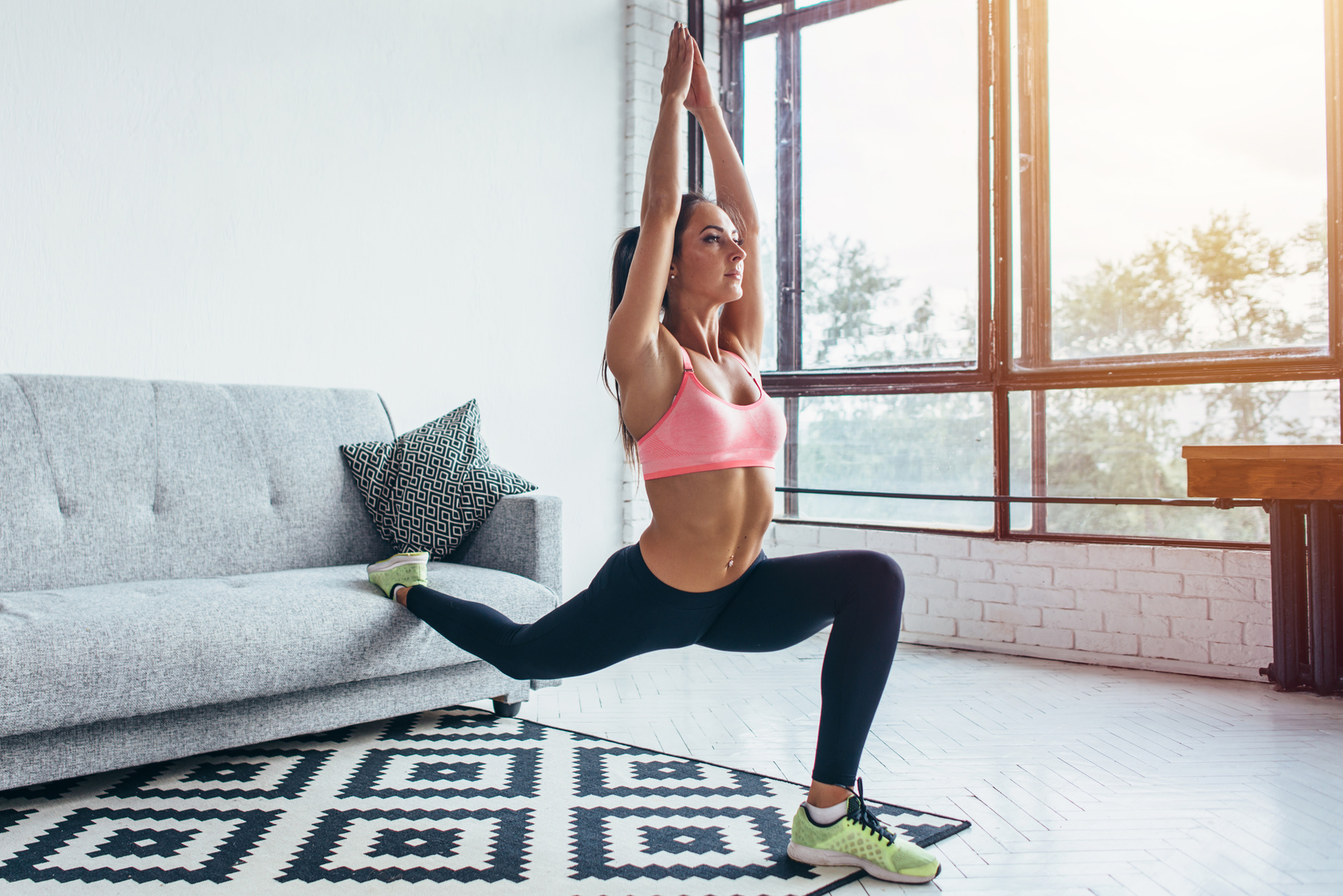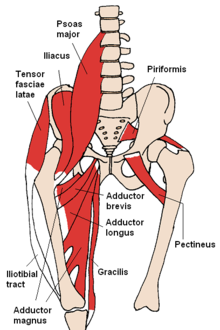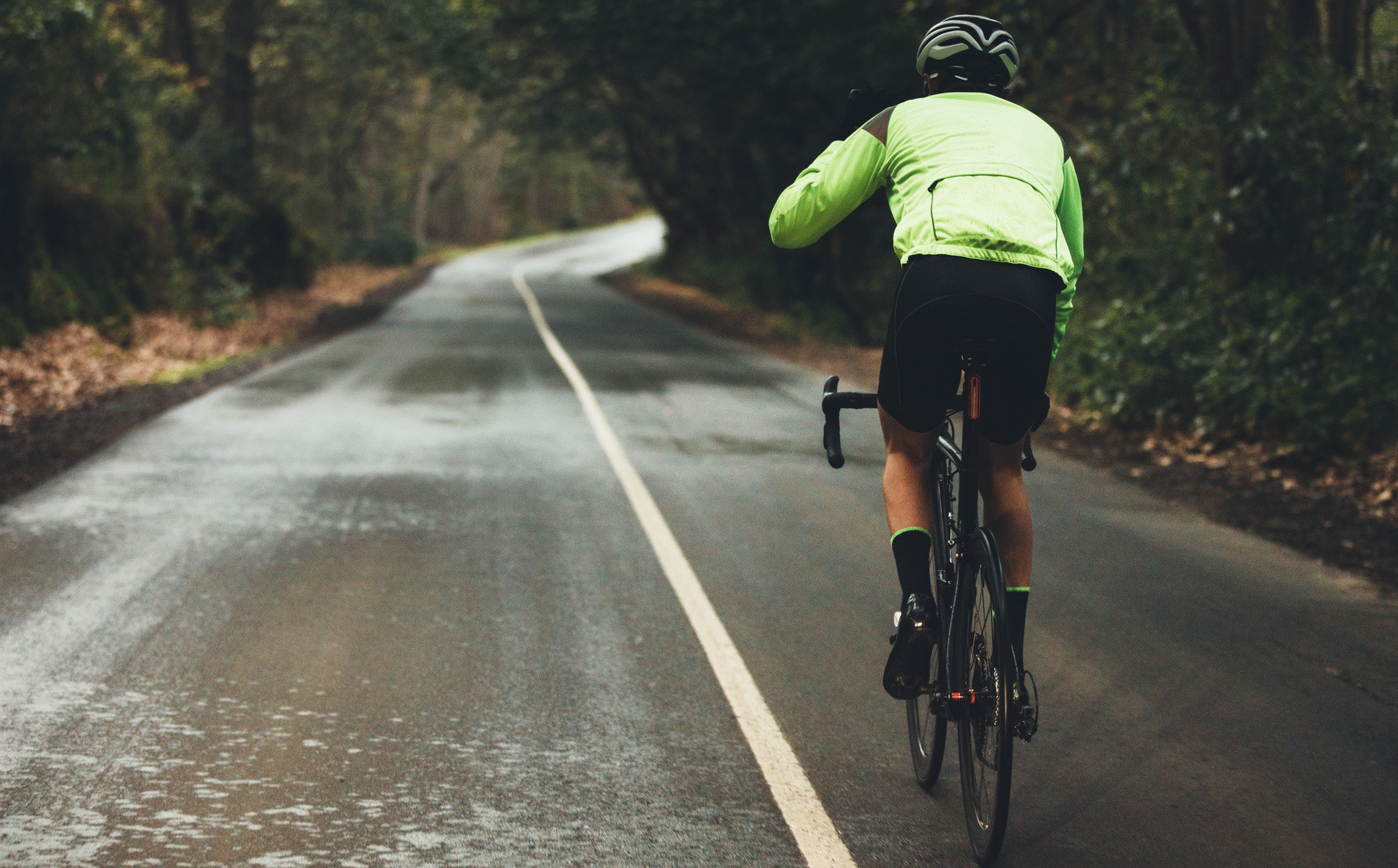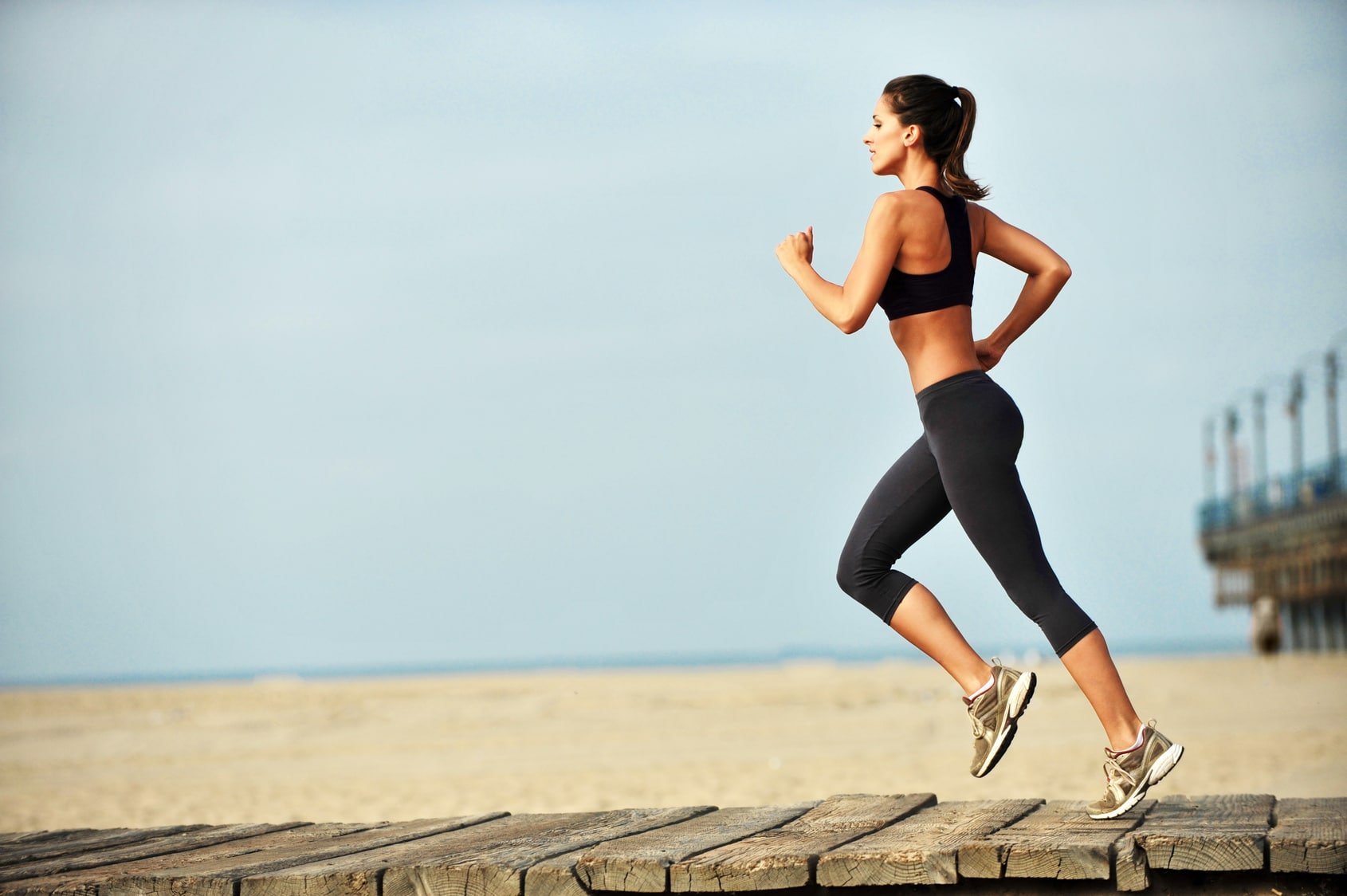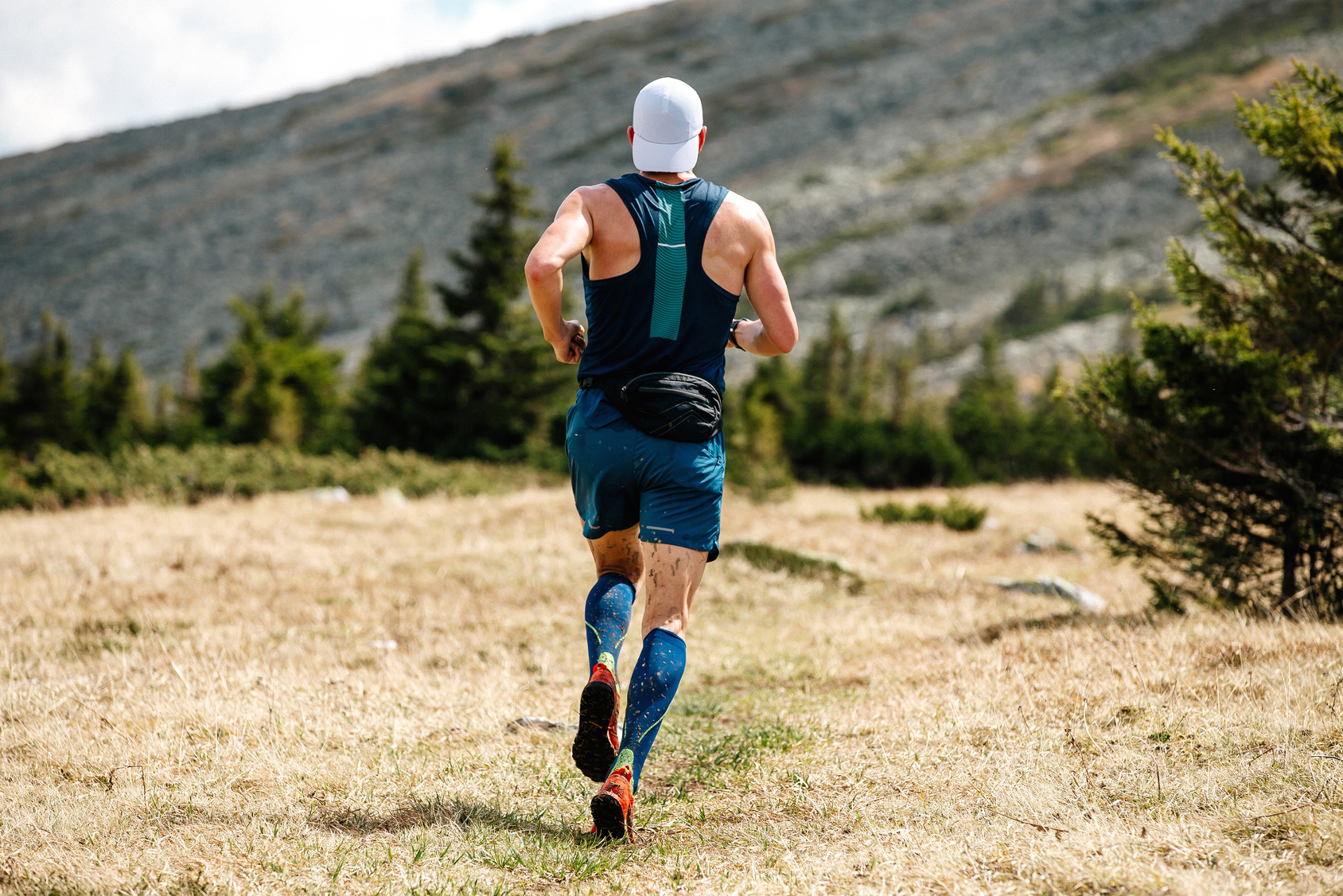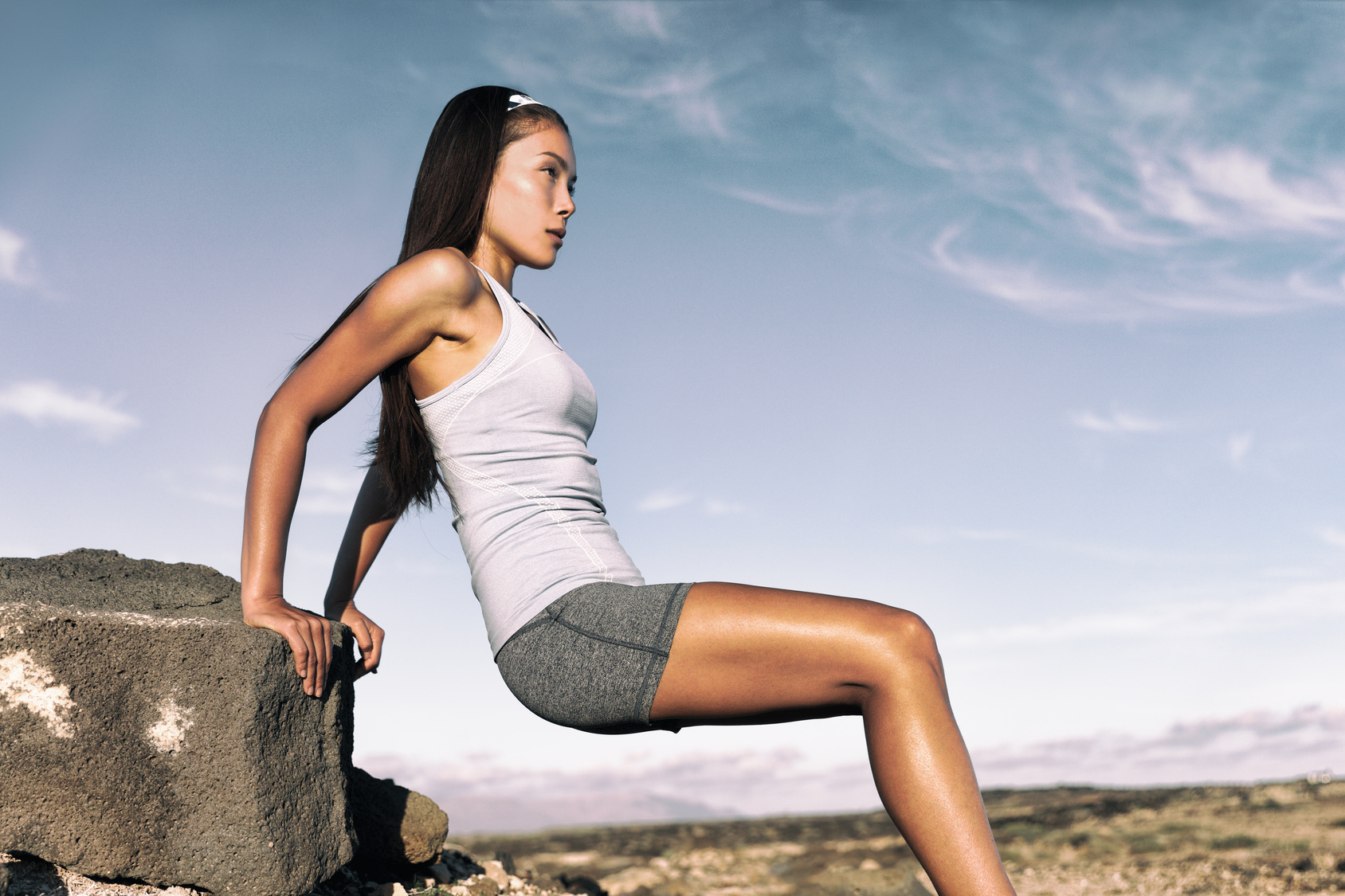Thinking about dipping your toes into the world of CrossFit but feeling a tad intimidated? Well, don’t break a sweat (yet). I’m here to be your guide and make sure you’re all set to embark on your CrossFit journey.
Today, we’re diving deep into the CrossFit universe, and trust me, this isn’t going to be your typical short and sweet post. No, siree! I’m spilling all the beans, sharing everything I know about CrossFit because, well, that’s just how I roll.
So, what the heck is CrossFit, and how on earth can it help you become a better runner? Stick around, my friend, because we’re about to unravel it all!
CrossFit: A Simple Definition
CrossFit, the dynamic fitness regimen that blends aerobic conditioning, weightlifting, and gymnastics, has exploded onto the fitness scene, captivating the hearts and muscles of enthusiasts worldwide. Here’s a glimpse into its origins and what makes it the “sport of fitness.”
A Diverse Heritage
CrossFit’s roots trace back to its use in police academies, the military, martial arts, and emergency response units. It was a training tool for the elite.
The CrossFit Definition
According to the official CrossFit website, it is “the principal strength and conditioning program for many police academies and tactical operations teams, military special operations units, champion martial artists, and hundreds of other elite and professional athletes worldwide.”
Sport of Fitness
CrossFit is often hailed as the “sport of fitness” because it encompasses a wide range of athletic movements and exercises, making it a comprehensive fitness program. From Olympic lifts to calisthenics, it covers it all.
Meteoric Rise
Since the opening of the first CrossFit gym (known as a “box”) in 2000, its popularity has skyrocketed. Today, thousands of affiliated gyms worldwide cater specifically to CrossFit, and the community of active CrossFit athletes continues to expand.
Inclusivity and Challenge
CrossFit prides itself on being scalable and inclusive. Whether you’re a seasoned athlete or new to fitness, CrossFit offers workouts that challenge and empower individuals at all levels.
Community and Camaraderie
CrossFit fosters a tight-knit community of enthusiasts who motivate and support each other in their fitness journeys. The camaraderie is a driving force behind its popularity.
Pushing Boundaries
CrossFit athletes push their physical and mental limits, constantly striving for improvement. It’s a journey of self-discovery and achievement.
Specialty is non-specialization
CrossFit defies categorization. Its workouts seamlessly merge speed work, strength training, plyometrics, Olympic-style weightlifting, gymnastics, and endurance exercises.
The Quest for Functional Fitness
CrossFit’s ultimate mission is to attain functional fitness—a concept that’s taken the fitness world by storm. Functional fitness means improving all aspects of your physical abilities, from mobility and strength to endurance.
A Holistic Approach
CrossFit doesn’t prioritize specialization. Instead, it embraces a holistic approach to fitness. It values well-rounded athletes who excel in diverse areas of physical performance.
Why Should you Start CrossFitting
There are as many reasons to jump on the CrossFit bandwagon as there are Crossfitters around the world.
Here are some of the most notable ones.
Hopefully, you’ll be convinced by the end of this post.
Community
CrossFit gyms are like hubs of positivity, and you’re about to meet some of the friendliest folks around. Brace yourself for a tidal wave of new friendships, because these places are known for their tight-knit communities.
You’ll quickly discover that the people you meet at your CrossFit gym share similar fitness and health goals. It’s like a match made in workout heaven, and that common ground makes connecting a breeze.
But wait, there’s more! Your newfound CrossFit buddies aren’t just there to exchange high-fives (although there’ll be plenty of those). They’ll become your support squad, keeping you accountable and cheering you on every step of the way.
It’s for Everyone
Let me debunk a common myth for you: CrossFit is NOT just for the young, superfit crowd.
In fact, it’s a fitness program that caters to anyone and everyone, regardless of age or fitness level. Whether you’re an elite athlete, feeling a bit out of shape, a retiree looking to stay active, or anyone in between, CrossFit has something for you.
CrossFit is like a big fitness buffet, and you get to choose the right portion for your fitness plate. Thousands of people have embarked on their fitness journey with CrossFit, many of them without any prior exercise experience.
When you step into a CrossFit gym (or box, as they like to call it), you’ll be greeted by a diverse group of people. There are hardcore athletes sweating it out alongside stay-at-home moms, all united by their shared passion for fitness. From burpees to Turkish get-ups, CrossFit offers a challenging but adaptable workout for every individual.
Make Big Lifestyle Changes
CrossFit isn’t just about intense workouts like pull-ups and burpees. It’s a complete lifestyle shift!
As you dive deeper into the CrossFit world, you’ll realize it’s not just about what happens inside the gym; it’s about making holistic changes in your life. You’ll find yourself paying more attention to your sleep quality, and before you know it, you’ll be whipping up delicious paleo meals like a seasoned chef.
You’ll See Results
Whether you’re looking to bulk up, trim down, or enhance your endurance, CrossFit has got you covered.
The secret sauce? Well, it’s the dynamic and ever-changing workouts that target every nook and cranny of your body. This constant variety keeps your muscles guessing and growing.
Say hello to more muscle mass and a turbocharged metabolism, which translates to burning calories even while you’re chilling on the couch.
Look, Better Naked
Who doesn’t want to look better naked?
CrossFit delivers the goods, no doubt about it.
With consistent training, you’ll unleash a new level of endurance, strength, and overall fitness that will leave you positively stunned.
And guess what? You won’t need to target specific muscle groups as you might in traditional weightlifting – CrossFit works its magic everywhere!
In just a few short months, you’ll notice gains in all the right places – a beefier chest, pumped shoulders, biceps that pop, and a butt that’s ready for its close-up.
Functional Training
CrossFit isn’t just about lifting weights or doing high-intensity workouts; it’s about making your body more capable in everyday life.
A typical CrossFit session includes a variety of movements that mimic real-life actions. Think about it – you’re not just training to look good; you’re training to be functional in all aspects of life.
Whether it’s lifting heavy boxes, reaching for items on the top shelf, opening doors, or even participating in team sports, CrossFit prepares you for the challenges of daily living.
You’ll master exercises like deadlifts, kettlebell swings, push presses, and Turkish get-ups, all of which counteract the negative effects of our often sedentary, desk-bound lifestyles.
You’ll Test Your Limits
CrossFit isn’t just a workout – it’s a journey of self-discovery and pushing your limits.
When you embark on the CrossFit path, you’ll encounter exercises and challenges you’ve never tried before. You’ll push your body to its limits and then some.
In those moments, you might surprise yourself. You’ll find that you’re capable of achieving things you never thought possible.
Breaking through your own limits and pushing yourself to new heights will give you a profound sense of power and accomplishment.
Have More Fun
CrossFit isn’t just about gains – it’s about having a blast while you’re at it!
With its ever-changing lineup of exercises, CrossFit guarantees that your workouts will never be dull.
Each time you step into the box, you’ll be faced with a new and exciting challenge.
From sprints to kettlebell swings, barbell presses, rowing, and bodyweight exercises like handstands and ring dips, there’s always something different on the menu.
The variety of workouts will keep you on your toes, leaving you drenched in sweat but also feeling incredibly accomplished and hungry for more.
After all, as they say, variety is the spice of life.
What to expect – The first day
Joining a CrossFit Class (under the supervision of a certified trainer) is the way to go if you are serious about CF.
Other than that, here are a few things to expect on your first day in the “box.”
Learn the Jargon
Get ready to learn the lingo of CrossFit because there’s a whole new world of terminology to explore!
First off, we have “The Box.”
This isn’t your average gym. It’s a CrossFit training facility, typically a no-frills space with cement walls, weights, bars, ropes, and no distractions like TV screens or mirrors.
Next up is “WOD” – Workout Of the Day.
These workouts are the bread and butter of CrossFit, and they change from one day to the next. Each WOD challenges a different aspect of your functional strength or conditioning, often in a circuit format with minimal rest between exercises. For instance, you might do an 800-meter run followed by 25 reps of push-ups, deadlifts, box jumps, and burpees, and then finish with another 800-meter run.
Then we have “AMRAP” – As Many Rounds As Possible.
In an AMRAP workout, your goal is to complete a circuit of exercises as many times as you can within a specified time frame. For example, you might have a 30-minute AMRAP of 30 squats, 5 pull-ups, 20 burpees, and 25 push-ups. It can also stand for “as many reps as possible.”
Last but not least is “RX.”
When you can complete a WOD exactly as prescribed, including the specified number of reps and weights, you’ve “RX’d” the workout. It’s a badge of honor in the CrossFit community.
The Basic CrossFit Movements
Before you dive headfirst into the world of CrossFit, it’s crucial to master the fundamental movements. These are the building blocks that will set you up for success in more advanced workouts.
Here are the nine basic movements you need to become a fluent CrossFitter:
- Deadlift: A classic exercise that involves lifting a weighted barbell from the ground to a standing position, working your posterior chain.
- Sumo Deadlift: Similar to the deadlift, but with a wider stance, engaging different muscle groups.
- High Pull: A movement that combines a deadlift with a shrug, working your upper body and traps.
- Shoulder Press: This exercise targets your shoulders as you lift a barbell overhead from a standing position
- Push Press: Building on the shoulder press, the push press incorporates leg drive to lift the barbell overhead, working your entire body.
- Push Jerk: An advanced version of the push press that involves a dynamic dip and drive to propel the barbell overhead.
- Air Squat (or Bodyweight Squat): A squat without weights, focusing on your form and building lower body strength.
- Front Squat: Similar to the air squat, but with a barbell held in front of your shoulders, targeting your quads.
- Overhead Squat: Involves holding a barbell overhead while performing a squat, improving mobility and stability.
As you get stronger, you’ll be performing other exercises as well.
The list is long and includes moves like:
- Sprints,
- Pull-ups,
- Burpees,
- Sit-ups,
- Box jumps,
- Rowing,
- gymnastics ring work
How I got into Crossfit
I began my CrossFit adventure by experimenting with a few workouts (WODs) on my own. While I was already in decent shape and could handle many of the exercises, I realized that I needed expert guidance, especially for Olympic lifts and gymnastics movements that were entirely new to me.
In hindsight, I admit that it was a mistake not to enroll in a class right from the start. I should have sought professional advice to ensure I was using proper form and preventing injuries.
If you’re serious about learning CrossFit and staying injury-free, I highly recommend doing the same. Enrolling in a class or seeking guidance from experienced coaches can make a world of difference in your CrossFit journey. It’s all about setting a strong foundation and building from there!
Join a CF Box
To kickstart your CrossFit journey on the right foot, I strongly recommend finding a reputable CrossFit gym and enrolling in their on-ramp program. This is your golden ticket to mastering the fundamental exercises and staying injury-free in the long run.
Trust me, there’s no way around it, my friend. The proper guidance and coaching you’ll receive during an on-ramp program are invaluable. The good news is that you’re likely to find at least one CrossFit gym in your local area; they’ve become quite ubiquitous nowadays.
So, don’t hesitate – take that crucial step towards joining a CrossFit box, and you’ll be well on your way to achieving your fitness goals safely and effectively. Your CrossFit community awaits!
Get a Coach
Starting CrossFit on your own might seem like an adventure, but it can quickly turn into a risky one. There’s a high chance of injury or burnout if you dive in without proper guidance.
That’s why I’m here to strongly recommend beginning your CrossFit journey under the watchful eye of a coach.
CrossFit workouts can be quite complex, and it’s crucial to learn the proper techniques and how to ease into the routines. Your coach will be your guiding star, ensuring you perform each exercise in the correct form.
Remember, there’s no shame in asking for help or seeking clarification on any exercise or workout. It’s far better to put your ego aside and focus on your success rather than risking injury and setbacks. Don’t waste time and money doing CrossFit wrong – invest in your health and safety!
Test the Waters
Many CrossFit boxes offer a free trial session, which is a fantastic opportunity for you to dip your toes into this exciting world without committing fully.
This way, you can get a taste of CrossFit for runners and see if it’s the right fit for you. It’s especially beneficial if you’re still unsure about the whole concept.
Take advantage of this free session to explore and decide if CrossFit aligns with your fitness goals and preferences. It’s a risk-free way to get started on your journey.

